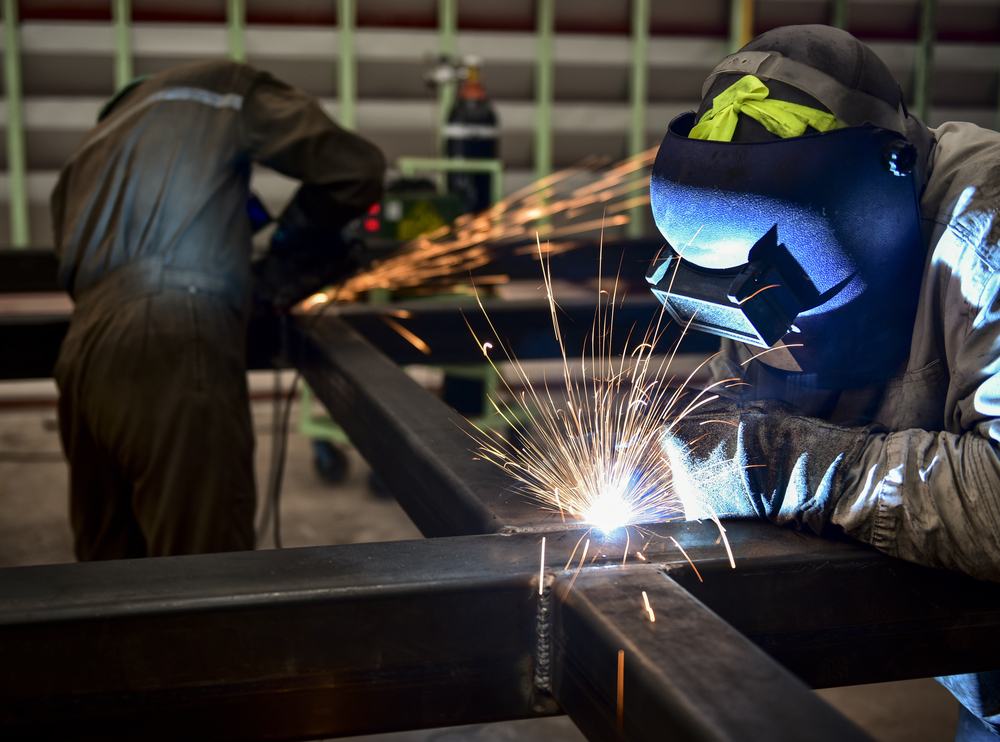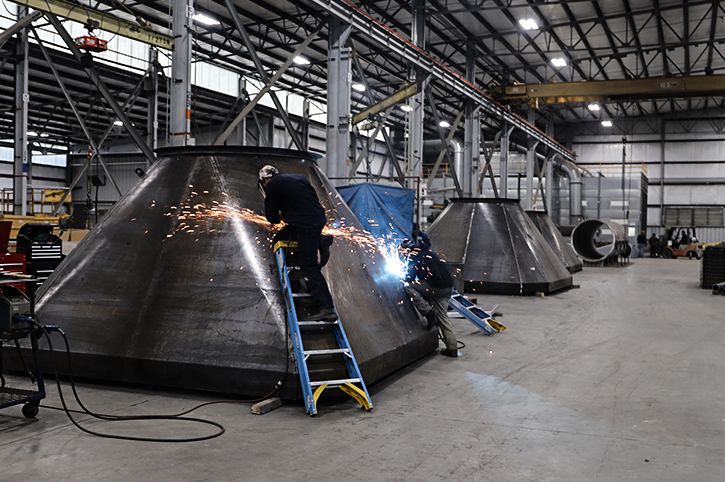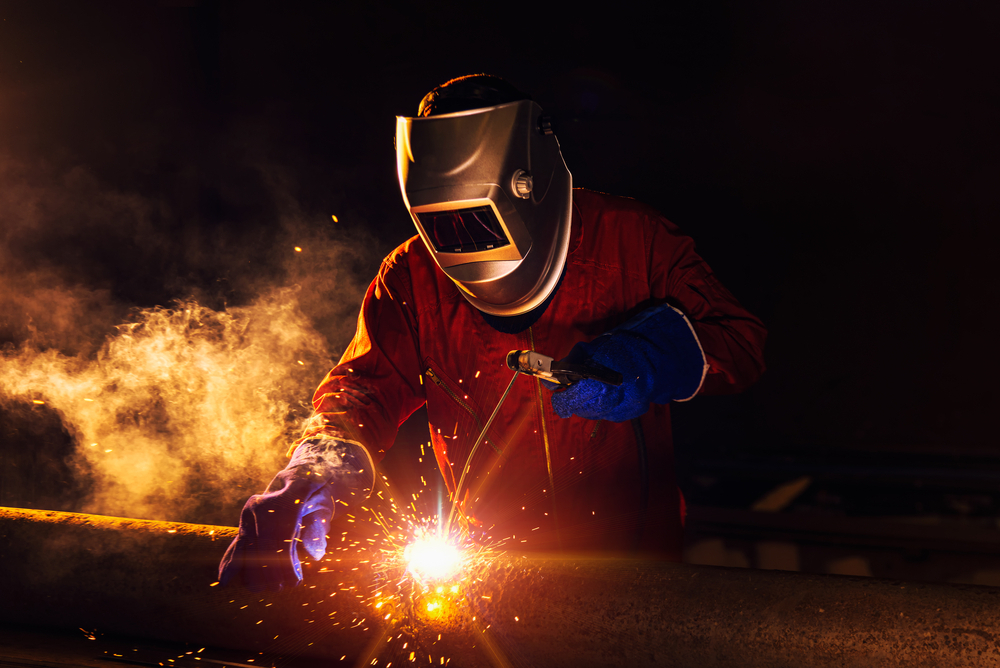Common Welding Repair Work Issues and Exactly How to Address Them Properly
Welding repair work commonly experience an array of problems that can jeopardize the honesty of the final item. Typical troubles consist of poor penetration, porosity, and misalignment, to name a few. Each problem presents unique obstacles that need specific approaches for resolution. Comprehending these concerns is crucial for welders intending to boost their skills and outcomes. This discussion will certainly explore these typical welding repair service concerns and reliable methods to resolve them.
Inadequate Penetration
Insufficient infiltration happens when the weld steel stops working to completely fuse with the base product, resulting in weak joints and potential structural failings. This problem commonly originates from not enough warmth input, inaccurate electrode angle, or inappropriate welding rate. Welders may experience poor penetration as a result of a mistake of the needed criteria for a specific product thickness or kind. Additionally, contamination on the base material's surface can impede effective bonding, worsening the trouble. To address insufficient penetration, welders ought to assure appropriate setups on their tools and keep a clean job surface area. Routine evaluation of welds is advised to determine any type of deficiencies early, permitting for timely corrections and the prevention of jeopardized architectural honesty in welded settings up.
Porosity
Porosity is an usual problem in bonded joints that materializes as small gas bubbles trapped within the weld steel. This defect can compromise the integrity of the weld, causing lowered strength and possible failure under anxiety. Montana Mobile Welding and Repair Welding. Porosity commonly develops from contamination, dampness, or inappropriate welding strategies, which permit gases to run away into the molten weld swimming pool. To attend to porosity, welders need to guarantee correct surface area prep work, keep a tidy functioning atmosphere, and use ideal welding specifications. Furthermore, selecting the best filler material and securing gas can reduce gas entrapment. Routine assessment and screening of welds can help determine porosity early, ensuring prompt rehabilitative actions are taken, therefore maintaining the high quality and dependability of the bonded framework
Misalignment
Imbalance in welding can emerge from different elements, including improper arrangement and thermal development. Understanding the source is vital for effective resolution. Several modification strategies are offered to straighten elements and assure structural integrity.
Sources of Misalignment
Welding imbalance often stems from a variety of underlying problems that can endanger structural stability. One main reason is incorrect fit-up of components before welding, which can cause spaces and uneven surface areas. Variations in thermal development throughout the welding procedure can additionally lead to distortion, particularly if the materials being joined have various coefficients of growth. In addition, inadequate clamping and fixturing might fall short to hold parts safely in position, bring about movement throughout welding. Badly conserved equipment, including welding devices and tools, may introduce variances in the weld bead, further adding to imbalance. Driver error, stemming from insufficient training or experience, can additionally play a considerable role in creating misaligned welds.

Adjustment Techniques Available
Resolving misalignment successfully calls for a mix of rehabilitative strategies tailored to the details problems handy. One usual approach is the usage of jigs or components to hold elements in the right setting throughout welding, making certain consistent positioning. Furthermore, preheating the products can aid minimize distortion and enhance fit-up. For substantial imbalance, mechanical realignment methods, such as making use of hydraulic jacks or clamps, can be used to fix the setting before welding. Post-weld warm treatment might likewise be needed to eliminate stresses brought on by misalignment. Careful inspection and adjustment during the arrangement phase can prevent misalignment problems from becoming considerable problems, advertising a smoother welding procedure and boosting overall architectural integrity.
Distortion
Distortion is a typical challenge in welding that can arise from different elements, including irregular cooling and heating. Recognizing the root causes of distortion is necessary for carrying out effective prevention techniques. Addressing this concern not only improves architectural stability but additionally improves the overall high quality of the weld.
Sources of Distortion
When subjected to the intense heat of welding, products commonly undergo adjustments that can cause distortion. This sensation primarily arises from thermal development and contraction throughout the welding procedure. As the weld area warms up, the material expands; upon air conditioning, it contracts, which can produce interior anxieties. In enhancement, irregular heating throughout a work surface can aggravate these tensions, resulting in warping or flexing. The sort of product additionally plays a substantial duty; steels with varying thermal conductivity and coefficients of development might react in different ways, leading to unpredictable distortions. Poor joint style and inadequate fixturing can contribute to misalignment throughout welding, raising the chance of distortion. Comprehending these causes is necessary for effective welding repair and avoidance methods.
Avoidance Techniques
Reliable prevention methods for distortion throughout welding focus on regulating warmth input and making certain appropriate joint layout. Preserving a constant heat input helps to minimize thermal development and contraction, which can bring about distortion. Utilizing techniques such as pre-heating the work surface can additionally reduce the temperature level gradient, advertising uniform home heating. Additionally, choosing suitable joint designs, such as T-joints or lap joints, can enhance stability and minimize stress concentrations. Implementing correct fixturing to secure the workpieces in position further aids in keeping alignment throughout the welding process. Lastly, staggered welding sequences can distribute heat much more uniformly, avoiding local distortion. By using these techniques, welders can significantly decrease the likelihood of distortion and boost the general high quality of their welds.
Cracking
Breaking is a typical concern encountered in welding repair work, typically arising from different variables such as improper air conditioning prices, material option, or inadequate joint preparation. The incident of splits can substantially jeopardize the stability of the weld, bring about possible failures throughout procedure. To resolve this problem, welders must initially evaluate the origin, making certain that products work and suitably selected for the certain application. Additionally, regulating the cooling price during the welding process is crucial; rapid air conditioning can generate anxiety and lead to fracturing. Appropriate joint layout and preparation likewise contribute to lessening the risk. Applying these strategies can boost weld quality and toughness, ultimately lowering the chance of fracturing in completed weldments.

Incomplete Combination
A substantial problem in welding repairs is incomplete blend, which takes place when the weld steel does not adequately bond with the base product or previous weld passes - Belgrade Welding. This flaw can cause weaknesses in the joint, potentially jeopardizing the integrity of the bonded structure. Variables contributing to insufficient combination include not enough warmth input, Website incorrect welding method, and contamination of the surface areas being joined. To address this concern effectively, welders ought to guarantee appropriate pre-weld cleaning and surface preparation, along with readjust their welding parameters to attain ample penetration and fusion. Routine assessment throughout the welding procedure can likewise assist recognize incomplete fusion early, permitting timely rehabilitative steps to boost the overall high quality of the weld
Overheating
While welding repairs can boost structural integrity, overheating provides a significant obstacle that can bring about material destruction. Extreme heat during welding can alter the mechanical properties of steels, causing minimized stamina, raised brittleness, and warping. This sensation is especially critical in high-stress applications where architectural integrity is extremely important. Determining overheating can entail visual examinations for discoloration or distortion, along with keeping track of temperature level throughout the welding process. To mitigate the risks connected with getting too hot, welders should utilize proper strategies, such as managing heat input, adjusting travel speed, and making use of ideal filler materials. Additionally, applying pre- and post-weld warmth treatments can assist recover material residential properties and boost the total quality of the repair service, guaranteeing long-term performance and safety.
Regularly Asked Concerns
What Are the Usual Indicators of a Welding Defect?

Just How Can I Check My Welds for High quality?
To examine welds for high quality, one can make use of aesthetic inspections, ultrasonic screening, and radiographic approaches. Each technique ensures architectural stability, identifies defects, and confirms adherence to defined standards, eventually enhancing the reliability of the bonded joints.
What Safety and security Preventative Measures Should I Take While Welding?
When welding, one must prioritize safety and security by wearing ideal personal safety devices, guaranteeing appropriate air flow, securing flammable products away, maintaining a clean work space, and recognizing environments to avoid accidents and injuries.
Can I Fix a Weld Without Renovating the Entire Joint?
Fixing a weld without redoing the whole joint is feasible, relying on the damage (Montana Mobile Welding and Repair). Strategies such as grinding, including filler product, or making use of a welding process can efficiently address specific flaws while protecting the bordering framework
What Equipment Are Vital for Efficient Welding Fixes?
Vital devices for reliable welding repair work consist of a welding maker, cable brush, mill, protective equipment, clamps, and filler products. Each device plays an essential function in making certain quality and safety during the fixing process. Porosity generally occurs from contamination, dampness, or incorrect welding techniques, which allow gases to leave right into the molten weld swimming pool. Improperly kept devices, consisting of welding devices and devices, may introduce disparities in the weld bead, further contributing to misalignment. When subjected to the extreme heat of welding, materials usually undergo changes that can lead to distortion. Cracking is a check this site out typical problem experienced in welding fixings, check my source typically resulting from numerous variables such as incorrect cooling rates, product option, or inadequate joint prep work. A considerable problem in welding repairs is incomplete fusion, which occurs when the weld steel does not sufficiently bond with the base material or previous weld passes.